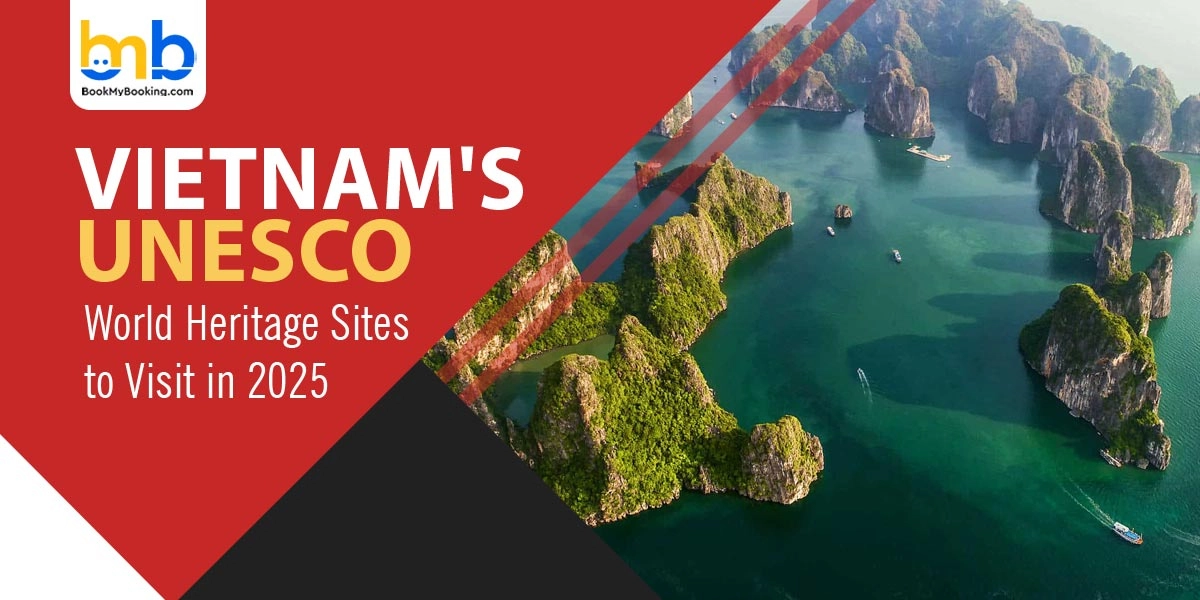Vietnam has emerged as a must-see destination in Southeast Asia in recent years. Its landscapes are beautiful; its beaches are pristine, and the West and the East richly influence culture, making it home to some of Vietnam's best World Heritage locations. Just as each region has its beauty to flaunt in different seasons of the year, there is much to experience in Vietnam in summer. If you plan a holiday this summer, we have listed some of the best UNESCO sites in Vietnam for a perfect summer vacation.
When visitors set foot on Vietnam's S-shaped land, they can instantly sense the breath of millennia-old history, magnificent landscapes, and vibrant cultures that have risen and fallen through time. The country has stunning natural wonders and a collection of Vietnam's UNESCO-recognised heritage sites, each with a rich historical significance. Each site represents a slice of time, a harmonious symphony between nature and humanity, from the eternal beauty of Halong Bay floating amidst the ocean to the timeless serenity of Hoi An Ancient Town. Every world heritage and historic site in Vietnam tells a silent yet stirring story, connecting you to Vietnam's rich past.
Let's journey through 8 UNESCO World Heritage Sites in Vietnam, including five cultural sites, two natural wonders, and one unique mixed site.
Here is the list, read below to know more-
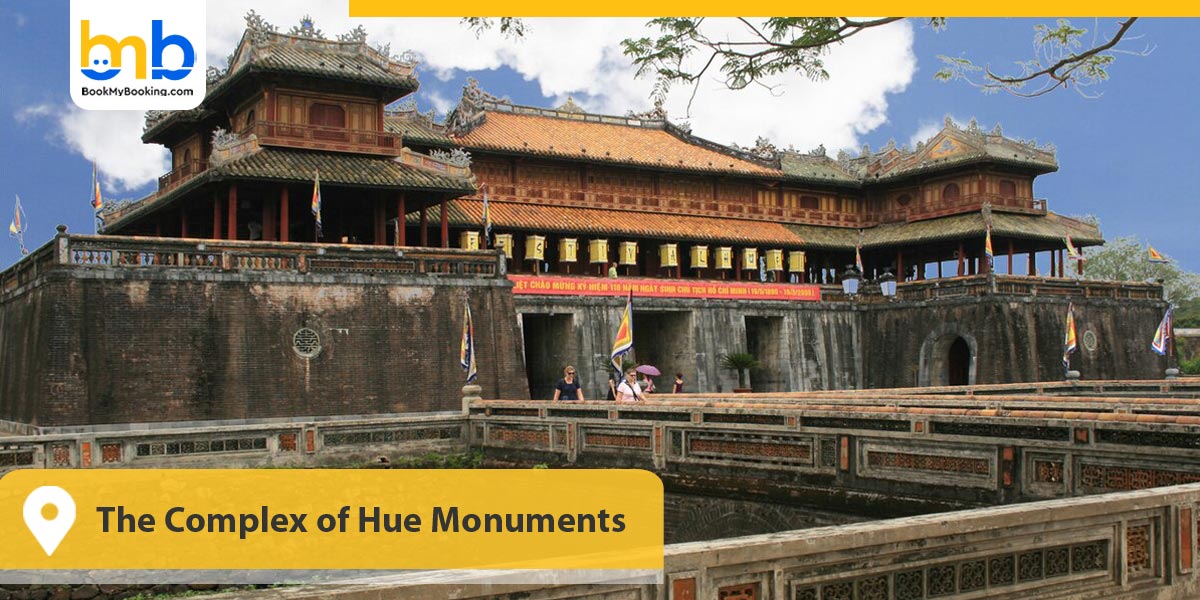
- The Complex of Hue Monuments
You should not miss this fantastic destination if you want a noteworthy and enlightening experience. The Complex of Hue Monuments is a Vietnam UNESCO World Heritage Site that showcases Vietnam's rich cultural and historical heritage. The magical imperial castle, the regal tombs, the pagodas, the temples, and the gardens serve as reminders of the Nguyen dynasty's power and splendour. You will learn about Vietnam's fascinating history, culture, traditions, struggles, and achievements. The Complex of Hue Monuments is one of the top historic sites in Vietnam, where you can admire the beauty and diversity of Vietnamese architecture and landscape. You will enjoy this tour and take home memorable memories. Some highlights of The Complex of Hue Monuments are Ngo Mon Gate, the Thai Hoa Palace, the Dien Tho Residence, and the Nine Dynastic Urns, some of the best cultural landmarks in Vietnam that are worth exploring with your acquaintances.
- Year of Recognition- 1993
- Opening Hours- Every day, 7 AM to 5:30 PM
- Location- Thua Thien Hue Province, Hue City, Central Vietnam
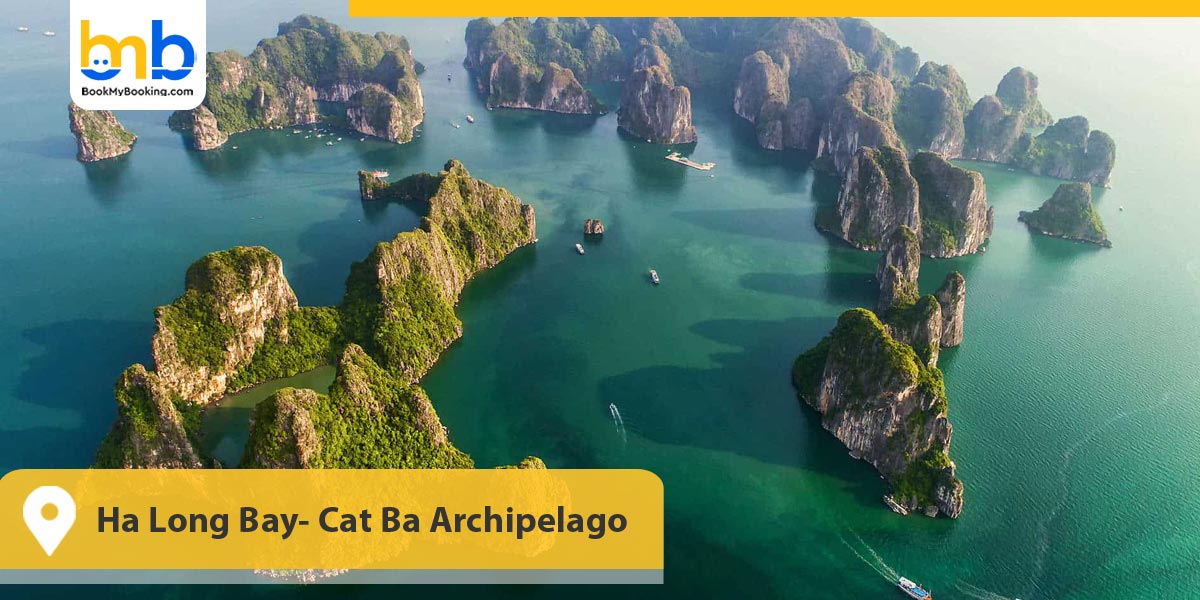
- Ha Long Bay- Cat Ba Archipelago
Ha Long Bay, Cat Ba Archipelago, is possibly the most visited World Heritage location in Vietnam and is renowned for its mesmerising, heart-stopping scenery. The dozens of limestone islands, caves, and settlements that comprise Vietnam's heritage are well known. You may cruise on a traditional junk boat, kayak across the emerald waters, or hike through the woodlands. The Cat Ba Island, the largest and most developed island in the archipelago, has several attractions, dining options, and beaches. Cat Ba National Park, a UNESCO site in Vietnam, houses various wildlife and endangered species. This destination will be perfect for nature lovers, adventure seekers, and culture enthusiasts. Get up and book your Vietnam UNESCO sites tour for your holiday now!
- Year of Recognition- 1994, 2000, 2023
- Opening Hours- Open 24x7
- Location- Quang Ninh Province, Northern Vietnam
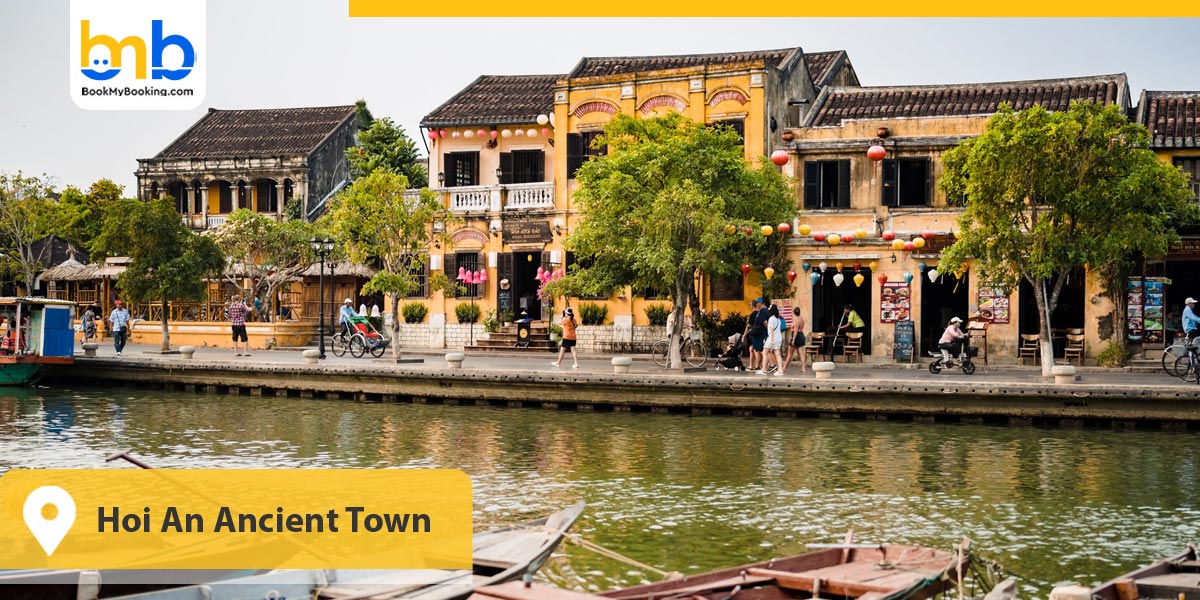
- Hoi An Ancient Town
Hoi An is a city with a mix of numerous influences due to its history, including China, Japan, India, and Europe, and it was a thriving trading centre in the 15th and 18th centuries. This Vietnam UNESCO World Heritage Site is located on the central coast of Vietnam and conserves the charm and elegance of a bygone era. Today, you can even explore the old quarter with its streets, wooden houses, colourful lanterns, temples, pagodas, bridges and museums that showcase the rich historic site in Vietnam, Hoi An. Try local foods such as cao lau, a noodle dish with pork and herbs, or banh mi, a crispy baguette with meat delicacies. Hoi An Ancient Town is where you can get to know the past and the present in harmony and peace, and discover the true heritage of Vietnam.
- Year of Recognition- 1994, 2000. 2023
- Opening Hours- Open 24/7
- Location- Quang Nam Province (Central of Vietnam)
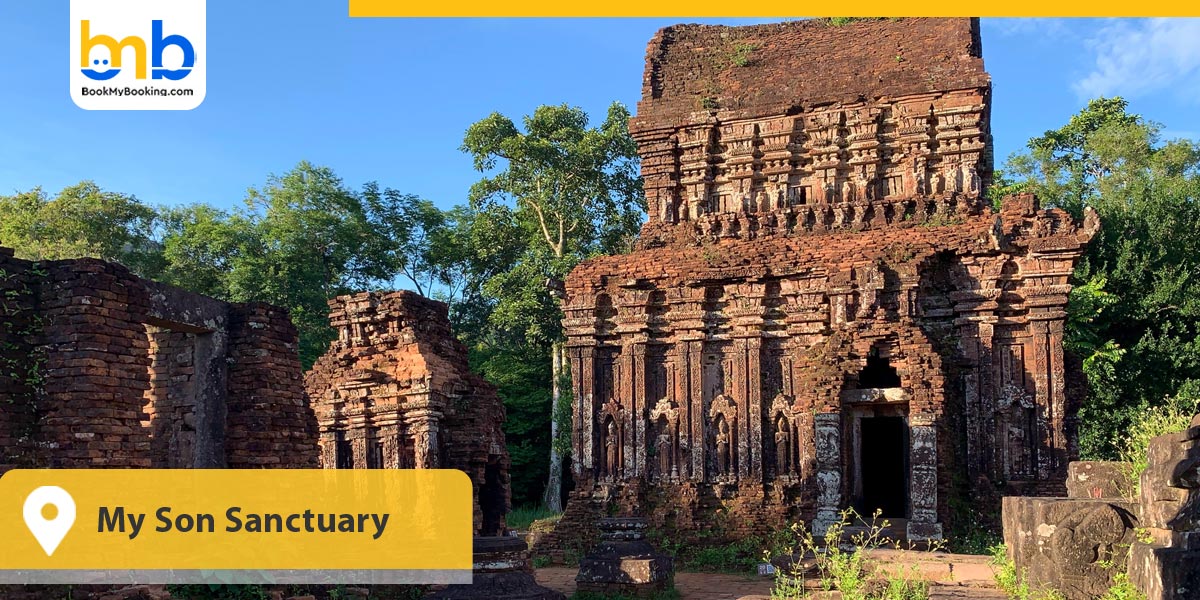
- My Son Sanctuary
The My Son Sanctuary, a complex of Hindu temples built by the Champa Kingdom between the 4th and 14th centuries, is a testament to rich history and cultural landmarks in Vietnam. Situated in a lush valley surrounded by mountains and forests, the temples are dedicated to Shiva, the supreme god of Hinduism, and display a unique blend of Indian and Southeast Asian architectural styles. Despite the damage caused by the Vietnam War, the historic site in Vietnam retains its beauty and charm, with stunning carvings, sculptures, and inscriptions that captivate history enthusiasts.
- Year of Recognition- 1999
- Opening Hours- Every day, 6 AM to 5 PM
- Location- Quang Nam Province (Central Vietnam)
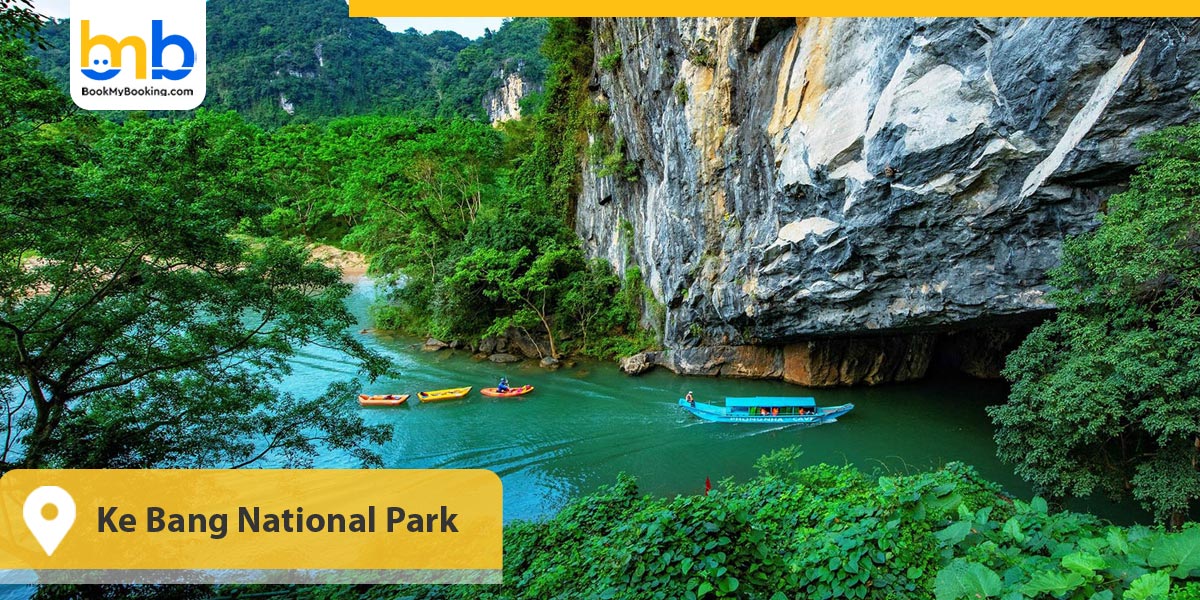
- Phong Nha- Ke Bang National Park
This mind-blowing place is one of Vietnam's UNESCO World Heritage Sites. It boasts the oldest karst mountains in Asia, dating back 400 million years. You will be thrilled by the hundreds of caves and grottoes that hide mindblowing underground rivers and rock formations. The park is also home to a rich biodiversity of vertebrate species, including many endemic and endangered ones. Some caves in an ancient town in Vietnam are so huge that they can fit a skyscraper inside. Whether you want to explore the world's largest cave, Hang Son Doong, or admire the beauty of Paradise Cave, you will find something to suit your taste and budget. Proudly one of the most incredible Vietnamese UNESCO heritage sites, Phong Nha Ke Bang National Park is a nature lover's paradise that will leave you breathless and inspired.
- Year of Recognition- 2003,2015
- Opening Hours- Open 24/7
- Location- Quang Binh (Central Vietnam)
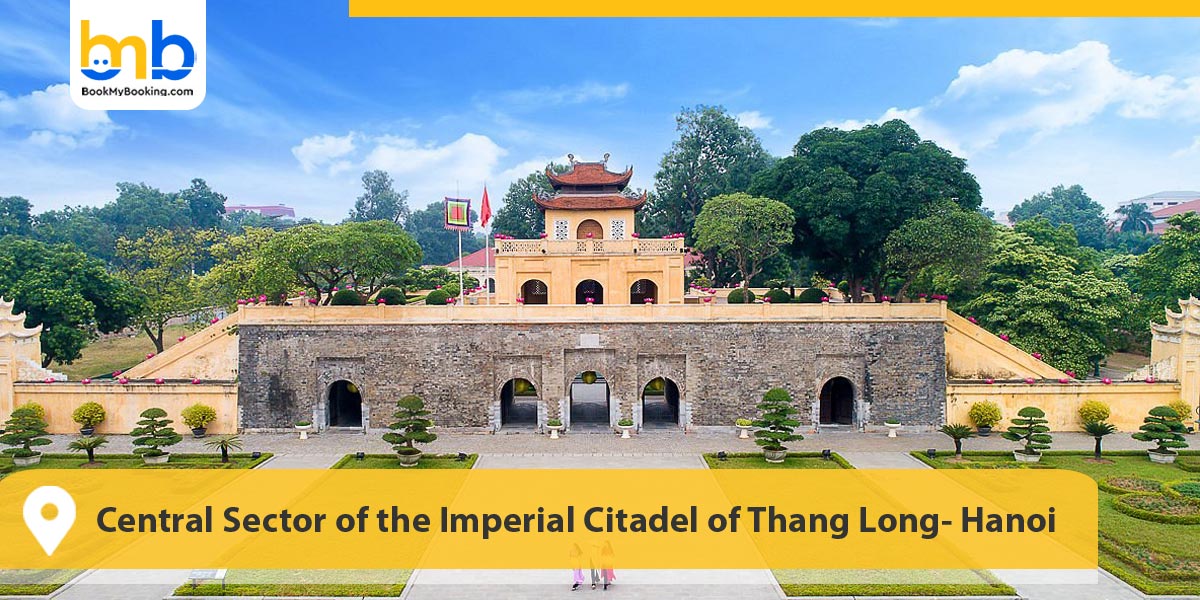
- Central Sector of the Imperial Citadel of Thang Long- Hanoi
This is Vietnam's cultural capital, landmark and biggest city. With a history spanning more than a millennium, it is also among the oldest cities in Asia. The most significant and well-preserved portion of the Imperial Citadel of Thang Long, the famous historic site in Vietnam, served as the seat of political power in Vietnam for over 13 centuries. The extensive and varied influences of the Chinese, Cham and Vietnamese civilisations and the prosperous Ly Tran and Le dynasties are mainly seen in the archaeological treasures, architectural masterpieces and towering infrastructures that are the must-visit heritage sites. The public was not allowed access to the Citadel until 2004. During the celebration of Hanoi's 1000th birthday in 2010, it was given the formal designation of Vietnam's UNESCO World Heritage Site.
- Year of Recognition- 2010
- Opening Hours- Open 24x7
- Location- Ha Noi (Northern Vietnam)
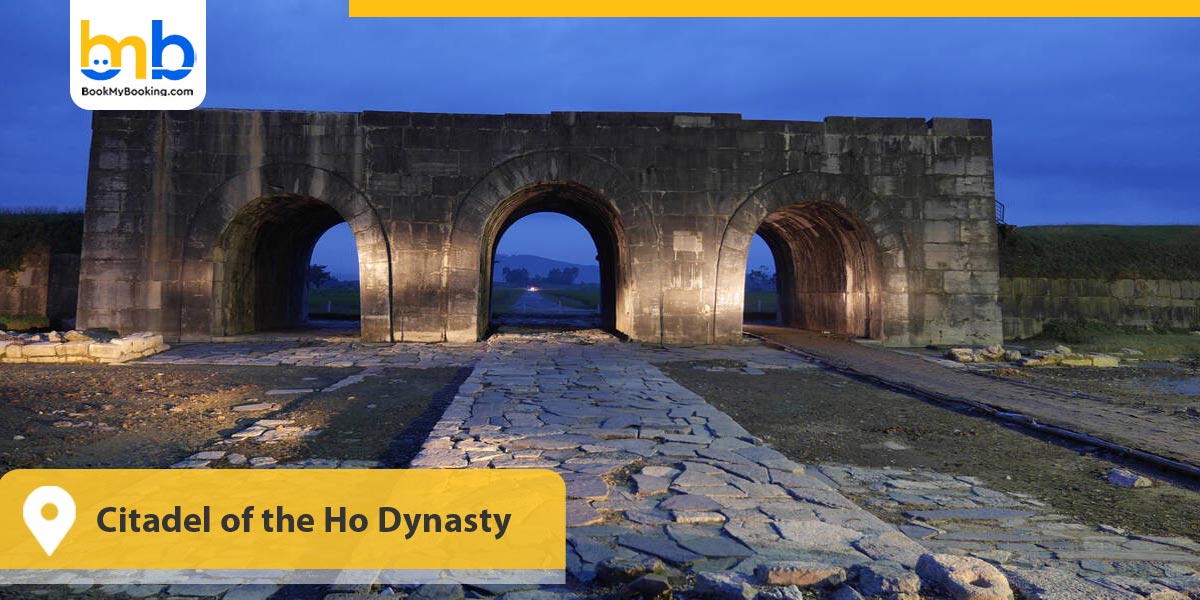
- Citadel of the Ho Dynasty
The Citadel, one of the best historic sites in Vietnam, is a masterpiece of architecture and geomancy built according to feng shui and neo-Confucianism principles. It was the western capital of the Ho dynasty, which ruled Vietnam for an influential period. The Citadel, Vietnam, a UNESCO site, was made of limestone blocks that formed the walls and gates, weighing up to several tons and fitted together without mortar. It is surrounded by a stunning landscape of mountains and rivers, creating a serene and majestic atmosphere. The Citadel is a Vietnam UNESCO World Heritage Site recognised for its outstanding universal value and testimony to a crucial period in Vietnamese and Southeast Asian history. Do not miss this opportunity to discover the hidden gem of Vietnam's heritage.
- Year of Recognition- 2011
- Opening Hours- Open 24/7
- Location- Thanh Hoa (North Central Coast of Vietnam)
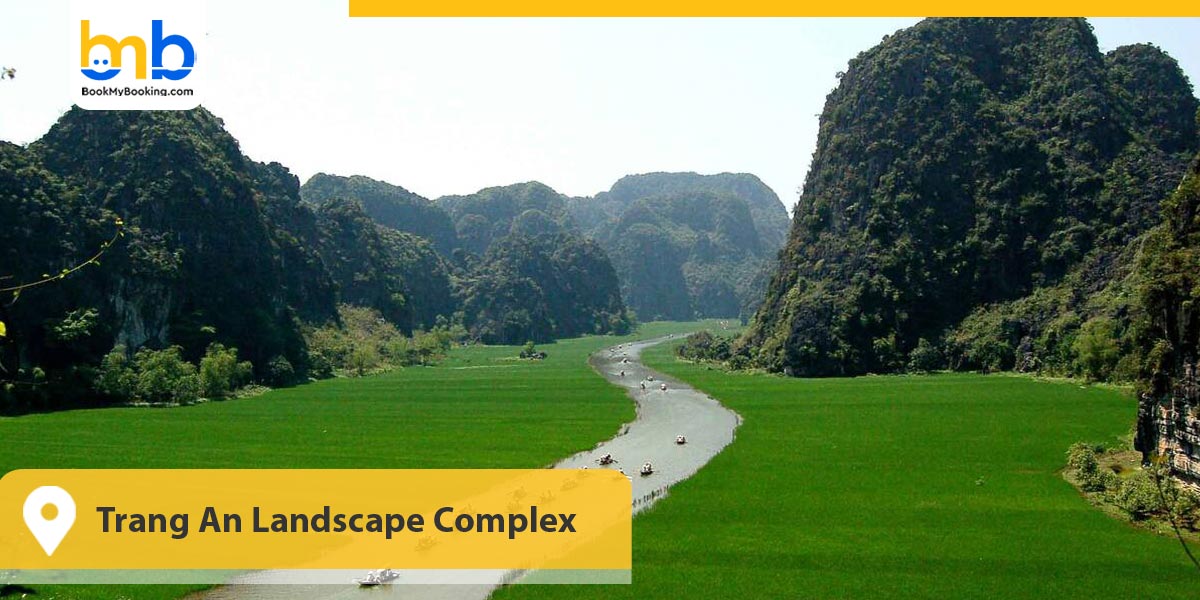
- Trang An Landscape Complex
Trang An is a Vietnam UNESCO World Heritage Site, covering over 6000 hectares of limestone mountains, valleys, caves, and rivers. It is also home to the ancient capital of Hoa Lu, where the first kings ruled in the 10th and 11th centuries. Trang An offers a variety of activities for travellers in the historic sites in Vietnam, from boat tours through the scenic waterways and caves to hiking and biking in the lush forest and rice fields to exploring the historical temples and pagodas. You can also learn about the rich history and culture through visiting World Heritage locations in Vietnam, which have witnessed more than 30,000 years of human occupation and adaptation.
- Year of Recognition- 2014
- Opening Hours- Open 24/7
- Location- Ninh Binh Province (Northern Vietnam)
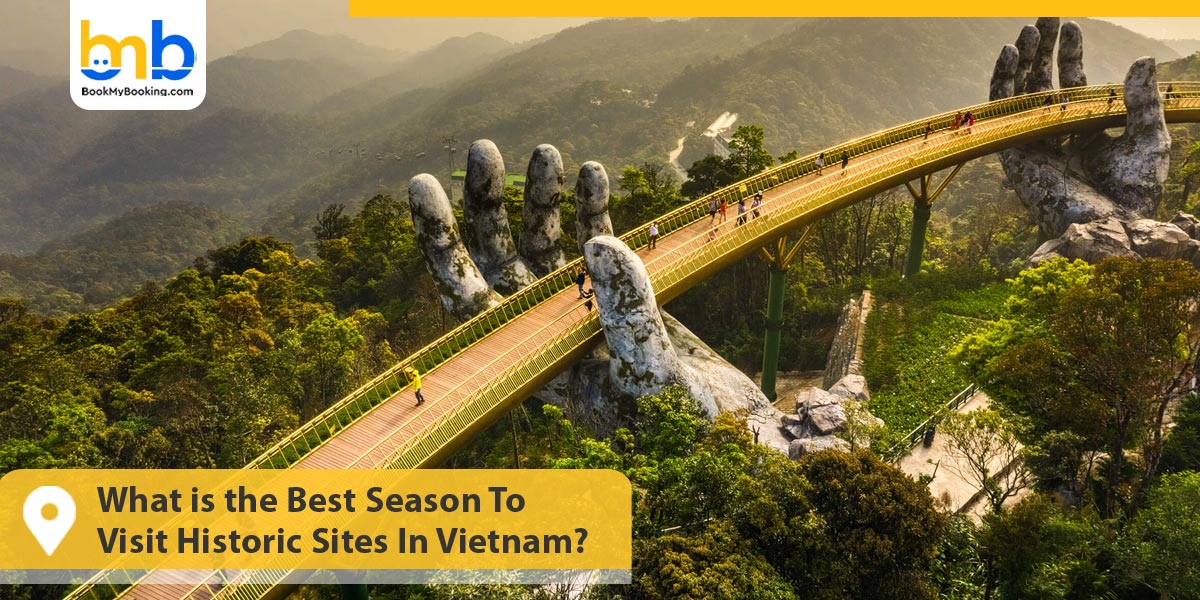
What is the Best Season To Visit Historic Sites In Vietnam?
The best time to visit Vietnam varies depending on the numerous places to visit in Vietnam. Spring and autumn are the best seasons to see and explore various historic sites in Vietnam. The temperatures are not too high or low, and there is minimal rainfall. But the weather in summer is not bad either. March to May or early June are perfect for all those who wish to visit the beaches or the valleys. The mercury doesn't rise beyond 35 degrees Celsius. Heavy monsoons hit many World Heritage locations in Vietnam in July, lasting till early September, and must be avoided.
Best Time to Visit Vietnam UNESCO Sites
- Dec-May is Peak Season
What To Expect
- Expect dry and mild weather, with temperatures ranging from 60 degrees Fahrenheit to 80 degrees Fahrenheit.
- Hotel and resort prices are at their peak due to the influx of domestic and international visitors.
- Significant events like the Lunar New Year celebrations offer unique experiences in Vietnam UNESCO sites.
- June-July is the Moderate Season
What To Expect
- The weather is usually warm with occasional rain, with temperatures between 70 degrees Fahrenheit and 90 degrees Fahrenheit.
- Accommodation costs are moderate, offering a balance between affordability and availability when you are in the country exploring World Heritage locations in Vietnam.
- Enjoy unique events like the Mid-Autumn Festival or the cheerful rice harvest season in the terraced fields of Sapa.
- Aug-Nov is Off Season
What To Expect
- The weather can be hot and rainy, especially in the northern and central regions, with temperatures ranging from 80 degrees Fahrenheit to 100 degrees Fahrenheit. So, take care of the weather when exploring the historic sites in Vietnam.
- Hotels and resorts offer their lowest rates, making it a budget-friendly time to visit.
- You can enjoy indoor activities like museum visits, explore the bustling local markets, or visit Vietnam's UNESCO heritage sites despite the rain.
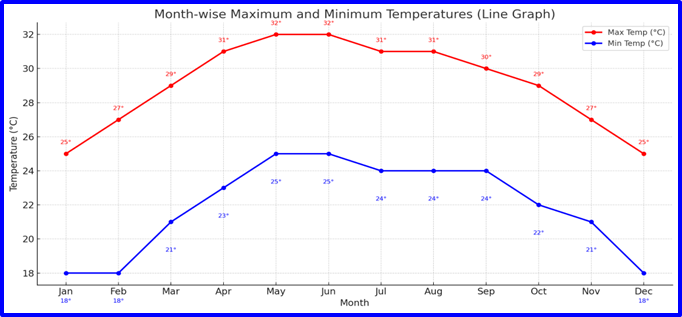
Understanding Vietnam's Climate to Plan the Perfect Trip
The country's climate varies greatly depending on the region and which cultural landmarks or Vietnam historic sites you are exploring, making planning your trip around the weather essential. Stretching over 1,600 kilometres from north to south, the country experiences distinct seasonal patterns across its three main regions: the north, central, and south.
Northern Vietnam (Hanoi, Ha Long Bay, Sapa)
Cool and Dry Season (November -April)
This is the best time to visit northern Vietnam. With cooler temperatures and minimal rainfall, it is perfect for trekking and sightseeing.
Hot and Humid Season (May-October)
When exploring historic sites in Vietnam, expect high humidity and temperatures above 30 degrees Celsius and occasional heavy rains, especially from July to September.
Central Vietnam (Hue, Da Nang, Hoi An, Nha Trang)
Dry Season (January-August)
Warm, sunny weather dominates, making it the best time for beach lovers. Da Nang, Hoi An, and Nha Trang are cultural landmarks in Vietnam that enjoy long stretches of sunshine.
Rainy Season (September-December)
This period brings monsoons and occasional typhoons, particularly in coastal areas. Flooding can occur in Hoi An, Hue, and many parts of Vietnam's World Heritage sites.
strong>Southern Vietnam (Ho Chi Minh City, Mekong Delta, Phu Quoc)
Dry Season (November-April)
Expect warm temperatures and little rainfall, perfect for island getaways while exploring Ho Chi Minh City, Vietnam's historic sites.
Wet Season (May-October)
Heavy but short-lived downpours are common, mainly in the afternoons. However, it is still a great time to visit as the landscapes are lush and vibrant.
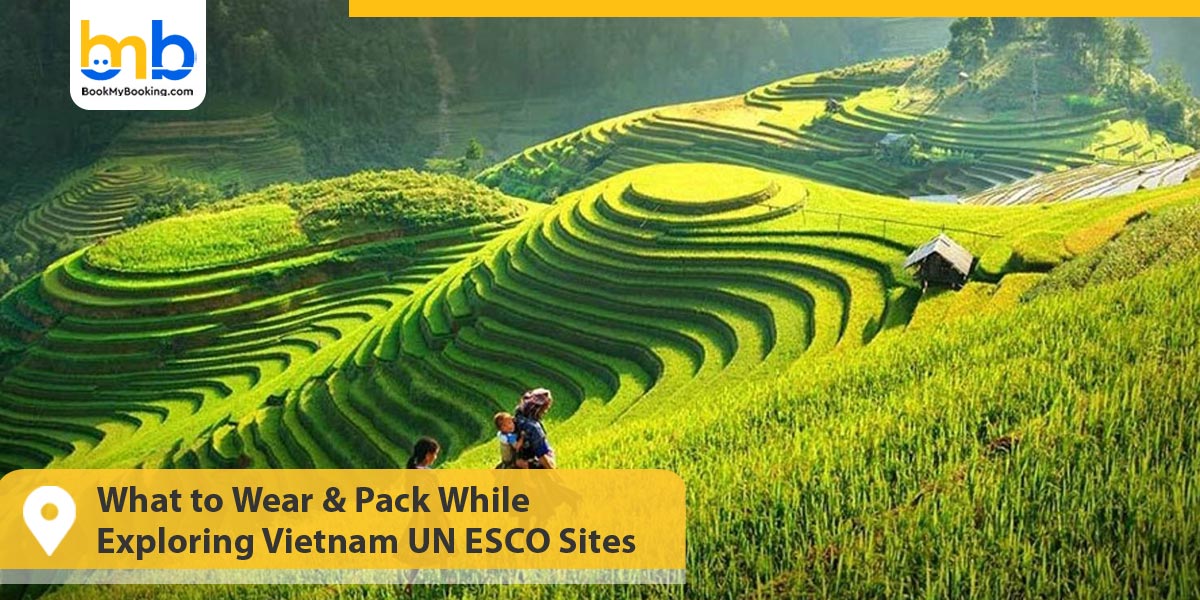
What to Wear & Pack While Exploring Vietnam UN ESCO Sites:
When exploring Vietnam's UNESCO sites, light jackets are used for chilly evenings, especially in the mountains.
Comfortable and relaxing walking shoes for exploring cities and trekking.
Sunscreen and sunglasses for bright days.
Are you ready to embark on Vietnam's UNESCO Sites Tours?
Vietnam's wealth of cultural and natural wonders promises countless adventures. Beyond the eight Vietnam's UNESCO World Heritage Sites, every region holds its treasures waiting to be discovered. Whether you are exploring Vietnam's Heritage through its ancient cities or embarking on Vietnam Heritage tours of its stunning landscapes, your journey will contribute to protecting historic sites in Vietnam for generations to come.
 Indian Rupee
Indian Rupee Pound Sterling
Pound Sterling UAE Dirham
UAE Dirham US Dollar
US Dollar Algerian Dinar
Algerian Dinar Angolan Kwanza
Angolan Kwanza Argentine Pesos
Argentine Pesos Armenian Dram
Armenian Dram Aruban Florin
Aruban Florin Australian Dollar
Australian Dollar Azerbaijani Manat
Azerbaijani Manat Bahraini Dinar
Bahraini Dinar Baht
Baht Balboa
Balboa Bangladeshi Taka
Bangladeshi Taka Belarusian Rubles
Belarusian Rubles Belize Dollars
Belize Dollars Bermuda Dollars
Bermuda Dollars Bhutanese ngultrum
Bhutanese ngultrum Bolivares Fuertes
Bolivares Fuertes Brazilian Reais
Brazilian Reais Bulgarian Leva
Bulgarian Leva Burundian Franc
Burundian Franc Cambodian Riels
Cambodian Riels Canadian Dollar
Canadian Dollar Central African CFA franc
Central African CFA franc Chilean Pesos
Chilean Pesos Colombian Pesos
Colombian Pesos Colón
Colón Congolese Franc
Congolese Franc Cuban Pesos
Cuban Pesos Danish Krone
Danish Krone Denars
Denars Djiboutian Franc
Djiboutian Franc Dominican Pesos
Dominican Pesos Dong
Dong East Caribbean Dollars
East Caribbean Dollars Egyptian Pounds
Egyptian Pounds Ethiopian Birr
Ethiopian Birr Euro
Euro Forint
Forint Georgian Lari
Georgian Lari Ghanaian Cedi
Ghanaian Cedi Guarani
Guarani Guinean Franc
Guinean Franc Guyanese Dollars
Guyanese Dollars Hong Kong Dollars
Hong Kong Dollars Hryvnia
Hryvnia Icelandic Krona
Icelandic Krona Indonesian Rupiahs
Indonesian Rupiahs Iranian Rials
Iranian Rials Jordanian Dinar
Jordanian Dinar Kenyan Shilling
Kenyan Shilling Kips
Kips Koruny
Koruny Krone
Krone Kuna
Kuna Lati
Lati Lebanese Pounds
Lebanese Pounds Libyan Dinar
Libyan Dinar Lira
Lira Litai
Litai Malagasy Ariary
Malagasy Ariary Malawian Kwacha
Malawian Kwacha Malaysian Ringgit
Malaysian Ringgit Maldivian Rufiyaa
Maldivian Rufiyaa Mexican Pesos
Mexican Pesos Moldovan Leu
Moldovan Leu Moroccan Dirham
Moroccan Dirham Myanmar Kyat
Myanmar Kyat Nairas
Nairas Namibian Dollars
Namibian Dollars Nepali Rupee
Nepali Rupee New Dollars
New Dollars New Lei
New Lei New Shekels
New Shekels New Zealand Dollars
New Zealand Dollars Nuevos Soles
Nuevos Soles Omani Rial
Omani Rial Pakistani Rupees
Pakistani Rupees Papua New Guinean Kina
Papua New Guinean Kina Philippine peso
Philippine peso Pula
Pula Qatari Rials
Qatari Rials Quetzales
Quetzales Rand
Rand Russian Rubles
Russian Rubles Rwandan Franc
Rwandan Franc Saudi Riyals
Saudi Riyals Singapore Dollars
Singapore Dollars Soms
Soms South Korean Won
South Korean Won St. Helena Pounds
St. Helena Pounds Sudanese pound
Sudanese pound Sums
Sums Swedish Krona
Swedish Krona Switzerland Francs
Switzerland Francs Syrian Pounds
Syrian Pounds Tajikistani Somoni
Tajikistani Somoni Tanzanian Shilling
Tanzanian Shilling Tenge
Tenge Tugriks
Tugriks Tunisian Dinar
Tunisian Dinar Ugandan Shilling
Ugandan Shilling Uruguayo Pesos
Uruguayo Pesos West African CFA franc
West African CFA franc Yemeni Rials
Yemeni Rials Yen
Yen Zambian Kwacha
Zambian Kwacha Zlotych
Zlotych

